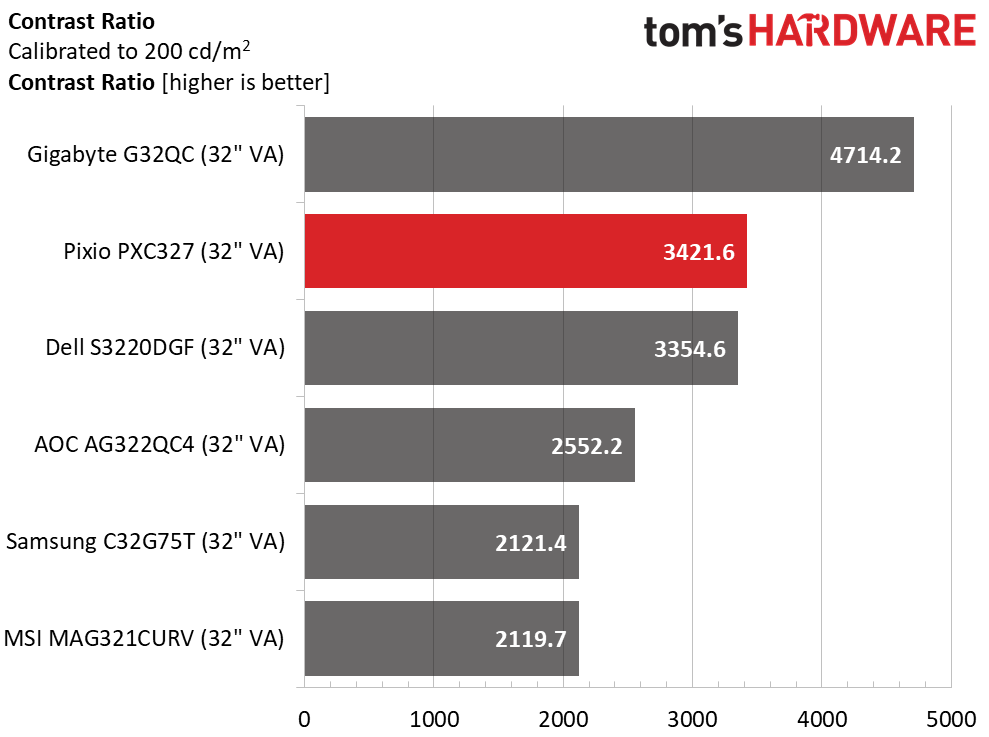Why you can trust Tom's Hardware
To read about our monitor tests in-depth, please check out Display Testing Explained: How We Test PC Monitors. We cover brightness and contrast testing on page two.
Uncalibrated – Maximum Backlight Level
We recruited five other 32-inch curved VA screens to compare the PXC327’s performance. All have 1440p resolution and a refresh rate of at least 144 Hz, except for the MSI Optix MAG321CURV, which is a 60 Hz, 4K screen. The others comparison monitors are the Gigabyte G32QC, Samsung Odyssey G7 (C32G75T), Dell S3220DGF and AOC Agon AG322QC4.



Though the PXC327 can top 350 nits in HDR mode, it peaks at 317.7 nits for SDR content. This is plenty bright considering the large screen area. The main attraction of the Pixio and all the screens here is contrast, which is thanks to very low black levels. VA is our favorite panel tech for a reason: It offers the very best dynamic range with no need for variable backlights or other trickery. The PXC327 delivers a solid 2,700.4:1 out of the box.
After Calibration to 200 nits



When we calibrated the PXC327 to 200 nits brightness (see our recommended calibration settings on page 1), we were concerned that lowering the contrast control would reduce the PXC327’s dynamic range, but that actually increased it. With a second-place black level result among the comparison group of 0.06 nit, the PXC327 nearly tops the field with an impressive 3,421.6:1 static contrast ratio. It doesn’t get much better than that.
ANSI contrast is equally impressive at 3,351.5:1, among the highest we’ve recorded. There is certainly no reduction in quality control at the Pixio’s low price point. The grid polarizer is fitted properly, and, as you’ll see later, screen uniformity is excellent.
Get Tom's Hardware's best news and in-depth reviews, straight to your inbox.
Current page: Brightness and Contrast
Prev Page Features and Specifications Next Page Grayscale, Gamma and Color
Christian Eberle is a Contributing Editor for Tom's Hardware US. He's a veteran reviewer of A/V equipment, specializing in monitors. Christian began his obsession with tech when he built his first PC in 1991, a 286 running DOS 3.0 at a blazing 12MHz. In 2006, he undertook training from the Imaging Science Foundation in video calibration and testing and thus started a passion for precise imaging that persists to this day. He is also a professional musician with a degree from the New England Conservatory as a classical bassoonist which he used to good effect as a performer with the West Point Army Band from 1987 to 2013. He enjoys watching movies and listening to high-end audio in his custom-built home theater and can be seen riding trails near his home on a race-ready ICE VTX recumbent trike. Christian enjoys the endless summer in Florida where he lives with his wife and Chihuahua and plays with orchestras around the state.